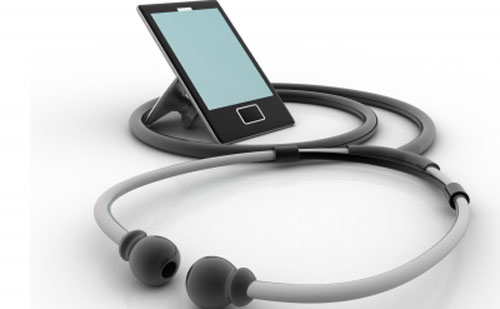Digital Health Options for Consumers are Disappointing
The International CES in Las Vegas is the place to check out the coolest consumer technology, but at this year's event the digital health offerings fell flat.
February 5, 2015

The International CES in Las Vegas is the place to check out the coolest consumer technology, but at this year's event the digital health offerings fell flat.
Jamie Hartford
Last month, I traveled to Las Vegas for the annual International CES consumer technology exposition fully expecting to be blown away by the next-gen digital health offerings. Instead, I came away from the show with the sense that digital health is not living up to the hype.
Held each January, CES, which draws more than 160,000 attendees and is covered heavily by the media, serves as an important stage for the consumer tech industry. Companies use the event to trot out their most exciting innovations, launch new products, and build buzz for the year ahead. They set up flashy booths, let attendees demo their devices, and stage some pretty crazy stunts. Masimo, for example, brought in “the man who doesn’t breathe”—freediving champion Stig Severinsen—to showcase its pulse oximeters by remaining submerged in a coffin-sized water tank for several minutes.
But antics aside, most of the products in the show’s health and wellness section were at best underwhelming and at worst completely disappointing. There were rows of colorful, wrist-worn activity trackers; numerous iterations of heart-rate monitors (versions for babies, a couple in pastel colors apparently meant to appeal to women); and more than a few devices that seemed like little more than high-tech snake oil.
In contrast, other sections of the show featured wow-worthy products like a home security camera that uses facial recognition to alert you as to who’s at your door, video games that resemble real-life military operations, and an autonomous drone that can hover over and film you by tracking your smartphone. If BMW can design a car that valets itself remotely, can’t the medical device industry offer consumers more than fitness trackers and sleep monitors?
Of course, medtech’s most impressive innovations—those that sustain or support life or which are implanted inside the body—will never be sold directly to consumers for obvious reasons. And yes, strict regulatory requirements mean makers of medical devices have to jump through more hoops than, say, a company that designs video games. As Stanley Yang, CEO of biosensor company NeuroSky, said during a panel discussion at the Digital Health Summit at CES, “The technology we have today goes way beyond what FDA can allow us to do in the consumer market.”
Even so, medtech is playing it too cautious when it comes to designing devices for consumers. Most makers of digital health solutions are focusing not on people who have a legitimate health problem but on the so-called worried well, overachievers who are already healthy, eat right, and exercise but insist on confirming what they already know with some kind of gadget.
But if makers of direct-to-consumer health technologies continue to cater to this market, they will wind up in the same predicament the automobile industry found itself in before the bailout. Drivers wanted SUVs, so that’s what automakers kept pumping out. When oil prices spiked, sales of gas-guzzlers stagnated, and car companies found themselves in a heap of trouble. Instead of focusing on the real problem (finite oil supplies), they gave consumers what they thought they wanted in the short term.
The difference for device makers is that there is definitely a market for solutions to real problems. While startups struggle to push products through commercial healthcare channels, consumers are looking for technologies to help them manage chronic conditions like diabetes, asthma, obesity, and COPD or care for elderly family members. As David Inns, CEO of GreatCall Inc., a provider of mHealth solutions for seniors, stated at the Digital Health Summit, there are “a lot of people with a lot of money who really have a problem.”
Hopefully, by the time the 2016 International CES event rolls around, the fitness tracker fad will have faded away. It’s time for makers of digital health devices to step up and start providing meaningful solutions for the consumers who so desperately need them.
Don't miss the MD&M West conference and exposition in Anaheim, CA, February 10–12, 2015. |
Jamie Hartford is MD+DI's editor-in-chief. Reach her at [email protected].
[image courtesy of COOLDESIGN/FREEDIGITALPHOTOS.NET]
You May Also Like


